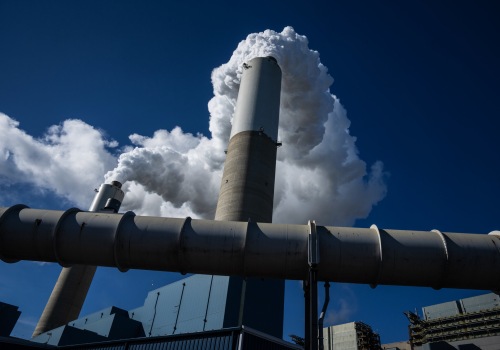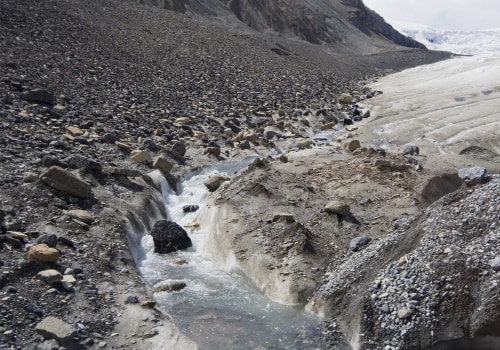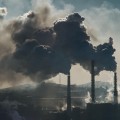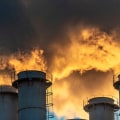As an environmental policy expert, I have seen firsthand the impact of air quality on both public health and the economy. The Clean Air Act, first enacted in 1970 and amended in 1990, is a crucial piece of legislation that has helped to improve air quality and protect the health of millions of Americans. In this article, I will discuss the history and impact of the Clean Air Act, as well as its current controversies and future implications.
The History of the Clean Air Act
The Clean Air Act was first passed by Congress in 1970 in response to growing concerns about air pollution and its effects on public health. The original legislation set national health-based standards for six common air pollutants: ozone (O3), particulate matter (PM), carbon monoxide (CO), sulfur dioxide (SO2), nitrogen dioxide (NO2), and lead (Pb).These pollutants were identified as major contributors to respiratory issues, cardiovascular problems, and other health risks. In 1990, the Clean Air Act was amended to include stricter regulations for industrial facilities and new provisions for addressing acid rain, ozone depletion, and toxic air pollutants. These amendments also required the Environmental Protection Agency (EPA) to conduct a cost-benefit analysis for all new regulations, taking into account both the financial benefits and potential costs to industry.
The Impact of the Clean Air Act
The Clean Air Act has had a significant impact on air quality in the United States. According to the EPA, since 1970 there has been a 41 percent reduction in emissions of the six common pollutants regulated by the Clean Air Act. This has resulted in an estimated 200,000 premature deaths being prevented each year, as well as 700,000 cases of respiratory illnesses and 60,000 cases of acute myocardial infarctions. Furthermore, the Clean Air Act has also had a positive impact on the economy.A study by the Society for Environmental Economics and Policy Studies found that the benefits of the Clean Air Act outweighed the costs by a ratio of 30 to 1.This is due to the fact that cleaner air leads to a healthier population, which in turn leads to increased productivity and reduced healthcare costs.
The Controversy Surrounding the Clean Air Act
Despite its success, the Clean Air Act has faced ongoing controversy and challenges. The fossil fuel industry and other polluters have consistently lobbied against the regulations, arguing that they are too costly and burdensome. In recent years, there have been attempts by the Trump administration to weaken or repeal certain provisions of the Clean Air Act, such as rolling back regulations on emissions from power plants and vehicles. However, environmental protection organizations, policy experts, and scientific experts have consistently defended the Clean Air Act and its importance in protecting public health. In fact, in a recent congressional testimony, a litigation team from the Natural Resources Defense Council (NRDC) argued that weakening or repealing the Clean Air Act would have devastating consequences for public health and the environment.The Future of the Clean Air Act
As we continue to face new challenges such as COVID-19 and its variants, it is more important than ever to prioritize environmental protection and public health.The EPA under the Biden administration has already taken steps to strengthen air pollution regulations and address climate change. However, there is still much work to be done in terms of collaboration between government agencies, policymakers, and communities to ensure that the Clean Air Act is effectively enforced and reaches all areas of the country. One area of concern is the insufficient reach of the Clean Air Act in low-income communities and communities of color. These communities often bear the brunt of air pollution and its health effects, yet they are often left out of regulatory decisions and lack access to resources for compliance. This is a clear example of environmental injustice and must be addressed through collaboration and innovation.
The Role of Technology in Improving Air Quality
Technology has played a crucial role in reducing air pollution and improving air quality.For example, the use of emission control programs and technology-based emission standards has helped to reduce emissions from industrial facilities and vehicles. The Clinton administration also implemented a cap-and-trade program for sulfur dioxide, which has been successful in reducing acid rain. Furthermore, advancements in air purifier technology have made it possible for individuals to improve their indoor air quality. HEPA filters, electrostatic filters, and air exchangers are all effective at removing pollutants such as fine particles, ozone, and other harmful substances from the air. This is especially important for those with respiratory issues or living in areas with high levels of outdoor pollution.
The Importance of Collaboration and Equity
In order to continue making progress in protecting public health and the environment, it is crucial that we work together to address issues such as climate change, air pollution, and environmental injustices.This includes collaboration between government agencies, businesses, communities, and individuals. Equity must also be a key consideration in environmental decision-making. As we have seen with the COVID-19 pandemic, certain communities are disproportionately affected by environmental conditions due to factors such as income level and race. It is essential that we prioritize reaching these communities and addressing their specific needs in order to achieve true environmental justice.
Conclusion
The Clean Air Act has been a crucial and successful piece of legislation in protecting public health and the economy. However, it is important that we continue to prioritize environmental protection and work towards a cleaner and healthier future for all.By collaborating, innovating, and prioritizing equity, we can ensure that the Clean Air Act continues to be a cornerstone of environmental policy in the United States.










